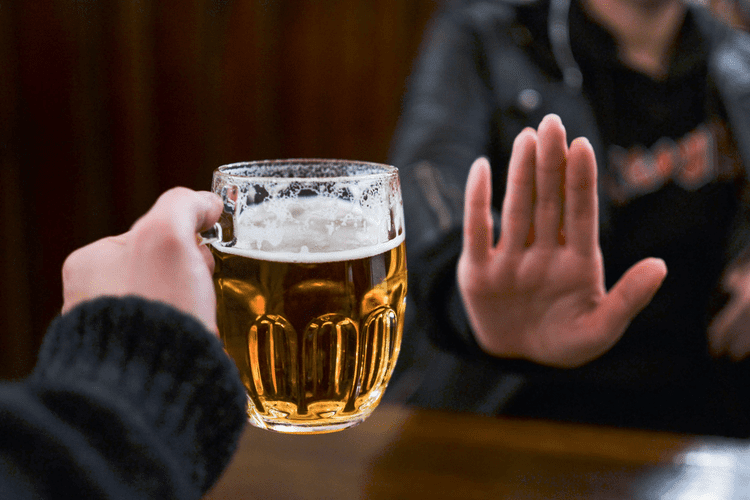Ketamine: Effects, Medical Uses, Risks
susanti
- 0
It is a schedule III controlled substance, meaning that it requires a doctor’s prescription to legally buy or possess it. It causes sedation by blocking NMDA receptors, which in turn block the action of many neurotransmitters. When administered by medical professionals, Rohypnol and ketamine taken together may actually have some medically-useful interactions. For example, according to one study done on 140 women undergoing an abortion, a ketamine-rohypnol combination reduced restlessness and confusion after the surgery. However, keep in mind that these “benefits” only apply to post-surgical care, and don’t imply any benefits for these drugs when used illegally outside of a medical setting. Unfortunately, ketamine is also commonly abused for recreational purposes, in spite of the many risks and dangers that this poses.
Cost and Coverage Varies by Type of Treatment
In young rhesus monkeys, a single 24-hour episode of ketamine-induced anesthesia triggered brain cell death 28. Users can also experience extreme dissociation from their environment (known as the “K-hole”) when taking high doses (over 150 mg) of ketamine 27. According to some early evidence from cell studies, ketamine may induce apoptosis, or programmed cell death, in the brain 25.
What is ketamine used for in mental health care?
Ketamine combined with opioids or https://ecosoberhouse.com/ alcohol can cause an individual to pass out, vomit or even fatally overdose. Ongoing use may also cause restlessness, depression, thinking difficulties, loss of consciousness and memory loss. Psychosis (e.g., seeing and hearing things that aren’t real or extreme fear) can also last after someone stops ketamine use. Differences in body type, age, the strength of the ketamine being taken and one’s own ability to handle the drug can mean that individual experiences are wildly different from one another. Also known as special K, super K and vitamin k, among other slang terms, in illicit use, ketamine is swallowed or evaporated to form a snortable powder. It is odorless and tasteless, so it can be added to beverages without being detected, and it can cause memory loss.

What are the negative effects of ketamine?
- Ketamine can sometimes increase the amount of fluid pressure in the brain and spine, which can damage these organs.
- Users often report experiencing visual and auditory “ketamine hallucinations,” a feeling of being “out of body,” and a lowered sensitivity to pain.
- This action can differ for people who have medical issues, such as liver disease or kidney impairment.
Ketamine is also being studied for other mental health issues, such as post-traumatic stress disorder (PTSD), obsessive-compulsive disorder (OCD), and in those with a history of psychosis. However, more research is needed before it can be recommended for these conditions. One recent study in the Journal of Clinical Psychology estimated that almost a third of the nearly 9 million people in the United States treated for depression each year have TRD.
The Origins and Medical Uses of Ketamine
The researchers acknowledge the benefits of both using ketamine in talk therapy with a provider present and in conjunction with out-of-office administration for treatment-resistant depression, PTSD, and other conditions. Insurers don’t typically pay it, and ketamine infusions can cost between $400 to $2,000 per treatment. Esketamine nasal spray can cost $590 and $885 per treatment session.

May Be Useful in Anxiety Disorders
- Polydrug use can involve both illicit drugs and legal substances, such as alcohol and medications.
- People who use it report sensations ranging from a pleasant feeling of floating to being completely separated from their bodies.
Like any drug, ketamine has a number of potential adverse side-effects that are important to be aware of. Ketamine acts by selectively blocking the N-methyl-d-aspartate (NMDA) receptor, which is most likely responsible for its reported memory-reducing (amnestic) and mood-related (euphoric) effects 10, 11. Ketamine is considered a Schedule III controlled substance by the FDA, which means that it requires a written, oral, or electronic prescription to legally buy or possess the drug 3. Due to the fact that ketamine doesn’t have an effect on a patient’s breathing, it can be safely used without the need for a ventilator. This unique quality quickly earned ketamine distinction as an excellent option for use by emergency responders.
It can distort perceptions of sight and sound and make the user feel out of control. Ketamine has rapidly-acting antidepressant ketamine addiction and mood-enhancing effects, which can begin to take effect within 1-2 hrs of administration. It works by blocking the brain’s NMDA receptors as well as by stimulating AMPA receptors, which are thought to help form new synaptic connections and boost neural circuits that regulate stress and mood.
While ketamine’s medical benefits are well-documented, its recreational use has become increasingly prevalent. Known colloquially as “Special K” or simply “K,” ketamine is often misused for its dissociative and hallucinogenic effects. Ketamine is a dissociative anaesthetic that affects sensory perception, causing a trance-like state while also offering pain relief, sleepiness, and memory loss. The molecular name 2-(2-chlorophenyl)-2-(methylamino)cyclohexanone reveals its complicated composition, intended to interact with the brain in unique ways.
Inducing general anesthesia
Conventional antidepressants continue to do a good job for me, and I only took those because of ketamine. Nausea, dizziness, and lightheadedness can happen occasionally as a patient comes off the ketamine in a supervised session, Stewart says. Of course, any comparison to opioids raises the question of the risk of addiction. “Ketamine is an intervention, but the notion of ‘treatment’ is much broader than that,” Krystal says. None of the doctors interviewed for this story were Substance abuse involved in Winograd’s or Coulter-Scott’s care. Though some, he says, may talk or make a comment about the music playing on their headphones or some part of their experience, or perhaps ask where they are.